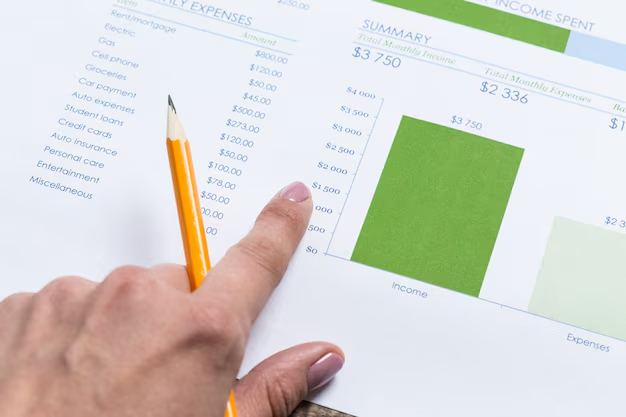Mastering Property Tax Entry: A Guide to Handling Property Tax Payable in QuickBooks Online
For any business owner managing their own bookkeeping, QuickBooks Online is a powerful tool that helps keep financial operations in order. One of the many financial obligations businesses must manage is property tax. Categorizing property tax payable correctly in QuickBooks Online ensures that your financial records are accurate and your liabilities are clear. Dive into this guide to learn how to effectively handle property tax payable in QuickBooks Online, keeping your books in perfect order.
Understanding Property Taxes in a Business Context
Before integrating property taxes into your QuickBooks Online account, it’s important to understand the nature of these taxes and their implications for your business. Property taxes are levied on real estate properties owned by a business and are crucial for funding local community resources, such as schools and public services.
Key Components of Property Taxes:
- Assessment: Property taxes are based on the assessed value of your property. This value is determined by local government appraisal.
- Rates: The tax rate applied to your property value varies by location and funding needs.
- Deadline: Tax payments are usually due annually or bi-annually, with specific deadlines.
Setting Up a Property Tax Payable Account in QuickBooks Online
To categorize property tax payable, start by creating an appropriate account in your QuickBooks Online chart of accounts. Here’s how to proceed:
Step-by-Step Guide:
- Log in to QuickBooks Online.
- Navigate to the Gear icon (⚙️) and select Chart of Accounts.
- Click on New to create a new account.
- In the Account Type dropdown, select Liabilities.
- In the Detail Type dropdown, select Other Current Liabilities.
- Name the account “Property Tax Payable.”
- Optionally, provide a brief description.
- Click Save and Close.
By setting up this account, you designate a specific place for property tax transactions, which facilitates organized record-keeping.
Recording a Property Tax Bill
Once your property tax payable account is set up, the next step is to record your tax bill. Accurately entering this information ensures that QuickBooks can provide accurate financial statements.
Recording via Expenses:
- Select + New from the Home screen.
- Choose Expense or Check if you’re recording a payment immediately.
- Select the appropriate Payee (usually the local tax authority).
- In the Category Details section, allocate the amount to “Property Tax Payable.”
- Enter the amount of the tax bill.
- Provide any relevant details or attachments for reference.
- Click Save and Close.
This method records the liability of your tax bill and helps you track the exact amount owed.
Paying a Property Tax Bill
Once a bill is recorded, QuickBooks Online makes it easy to record the actual payment when it’s due. Here's how:
Make a Payment:
- Choose + New and select Pay Bills.
- Locate your property tax payable item.
- Select the tax bill you intend to pay.
- Choose the correct bank account from which the payment is made.
- Enter the amount being paid (ensure it matches the bill).
- Click Save and Close to finalize the payment.
When you follow these steps, QuickBooks will automatically update the payable account to reflect the payment and adjust your bank balance accordingly.
Maintaining Accurate Property Tax Records
Consistency is key in bookkeeping. Here are a few best practices to keep in mind:
- Regularly update your records to match payments and changes in property values.
- Review the property tax payable account periodically to catch any discrepancies.
Helpful Tips:
- 📅 Set reminders for due dates to avoid late payment penalties.
- 📋 Reconcile accounts monthly to verify your entries against bank statements.
- 🧾 Keep digital copies of all tax-related documents in QuickBooks for easy tracking and auditing.
Handling Adjustments and Over/Under Payments
Sometimes, adjustments to property tax payable are necessary, whether due to reassessment or errors. Here’s how to manage:
Adjusting Entries:
- Navigate to Journal Entry via + New.
- Enter the appropriate account and amounts for the adjustment.
- Save and Close.
By using journal entries, you ensure that any manual adjustments are recorded and traced easily.
Key Takeaways for Managing Property Taxes in QuickBooks Online
- Set up a dedicated "Property Tax Payable" account for streamlined leverage of QuickBooks’ automation.
- Stay proactive about recording bills and payments to avoid errors.
- Utilize automation tools and reminders within QuickBooks to keep track of payment deadlines and amounts.
- Regularly reconcile accounts and reviews, ensuring financial records accurately reflect real-world transactions.
Summary of Steps to Manage Property Tax Payable in QuickBooks Online
🔍 Quick Overview:
- Create an account: Add 'Property Tax Payable' in QuickBooks.
- Record bills: Use Expense entry for accurate tracking.
- Pay taxes: Utilize the “Pay Bills” feature to mark payments.
- Adjust as needed: Use journal entries for adjustments.
- ♻️ Regular reviews to ensure correct entries and financial statement accuracy.
Understanding how to categorize and manage property tax payable within QuickBooks Online not only helps you maintain accurate records but also empowers you as a business owner. This process, albeit detailed, is critical for financial health and legal compliance. With this guide, navigate your property taxes with confidence.

Related Topics
- Are Property Taxes Tax Deductible
- Can I Get a Property Tax Refund
- Can I Pay Property Tax Online
- Can I Pay Property Tax With Credit Card
- Can Property Tax And Condo Fee Be Deducted In Maryland
- Can You Claim Property Taxes On Your Income Tax
- Can You Claim Property Taxes On Your Tax Return
- Can You Claim Your Property Taxes On Your Income Tax
- Can You Pay Property Tax Monthly
- Can You Totally Not Pay Property Tax Texas